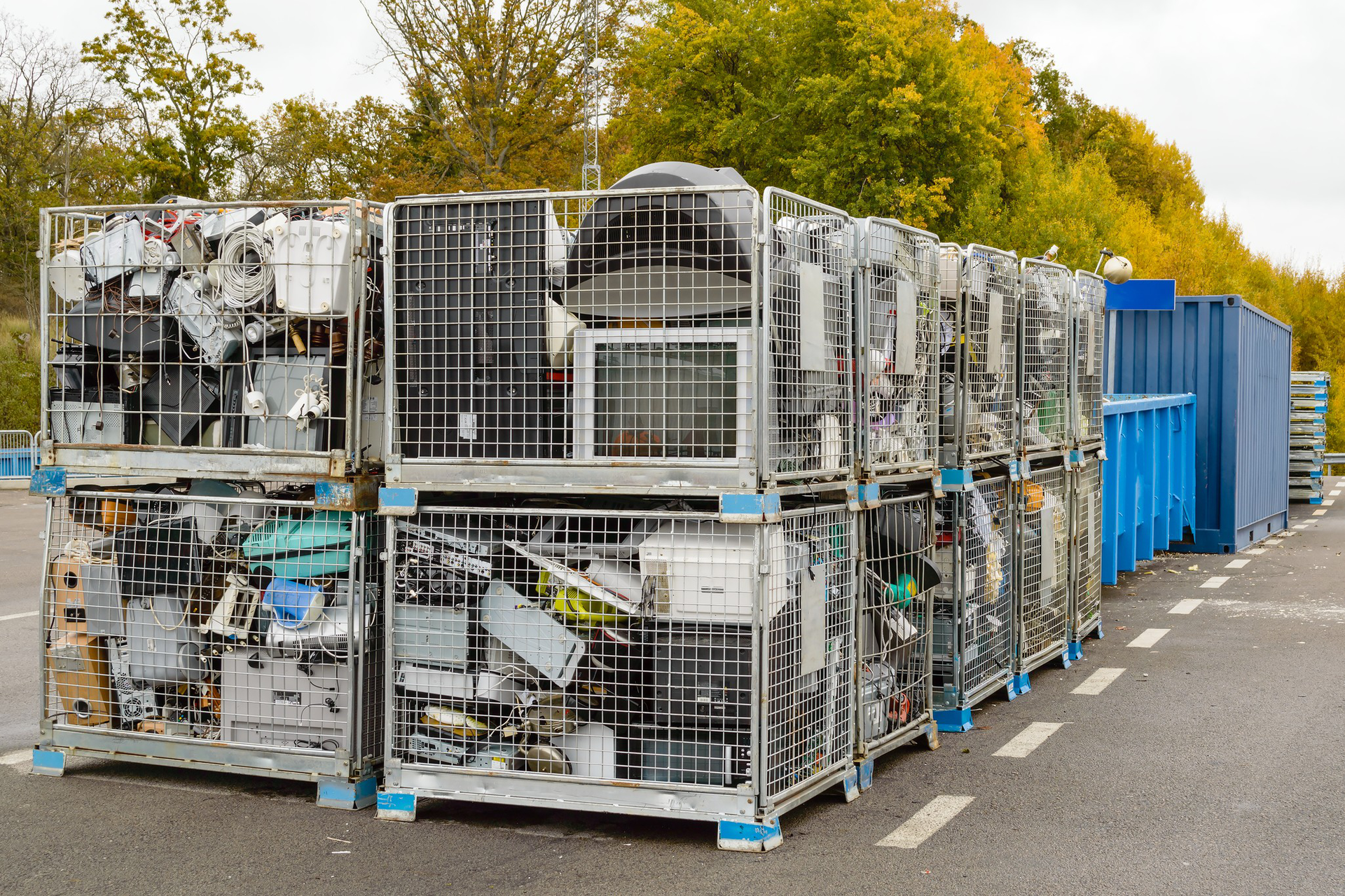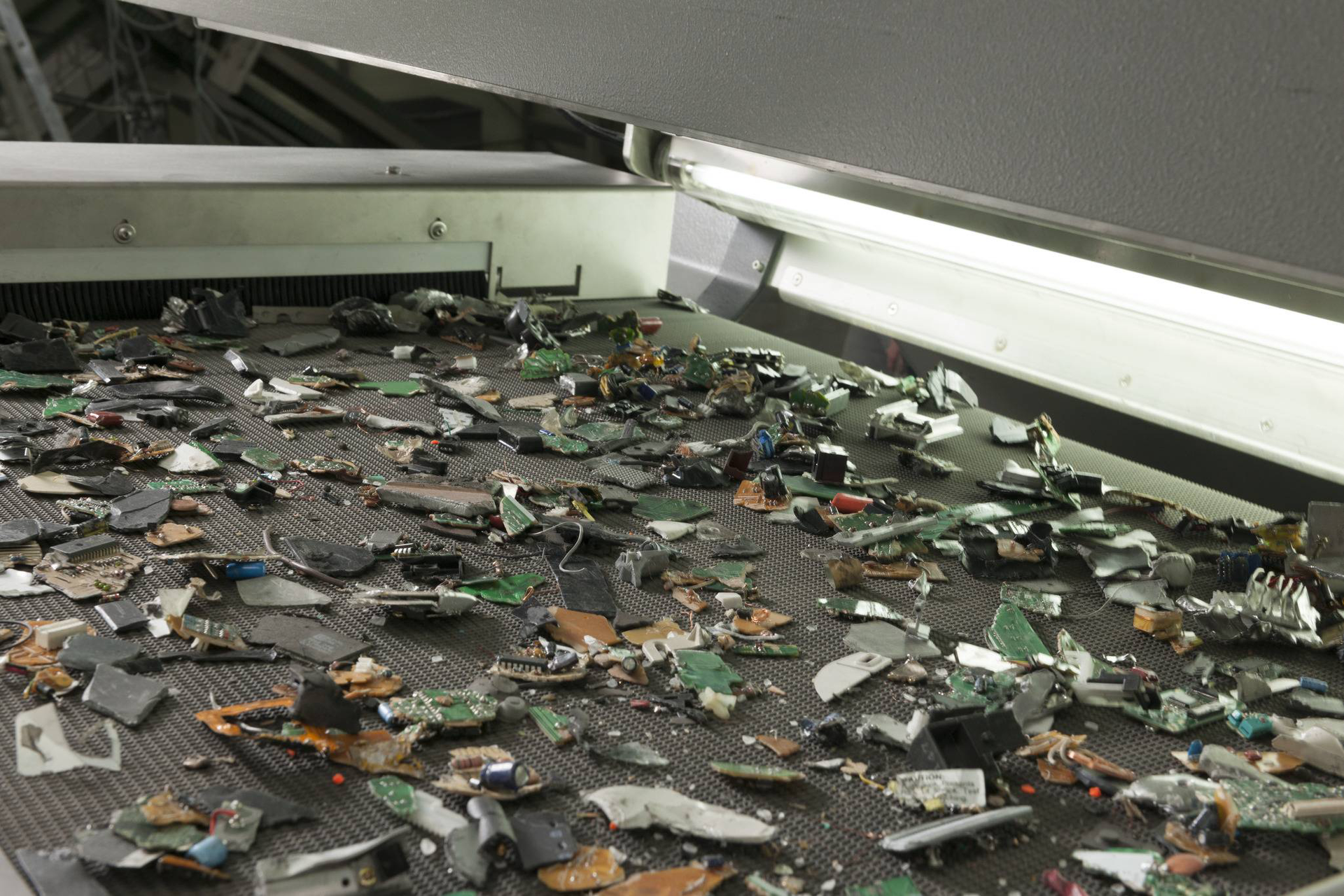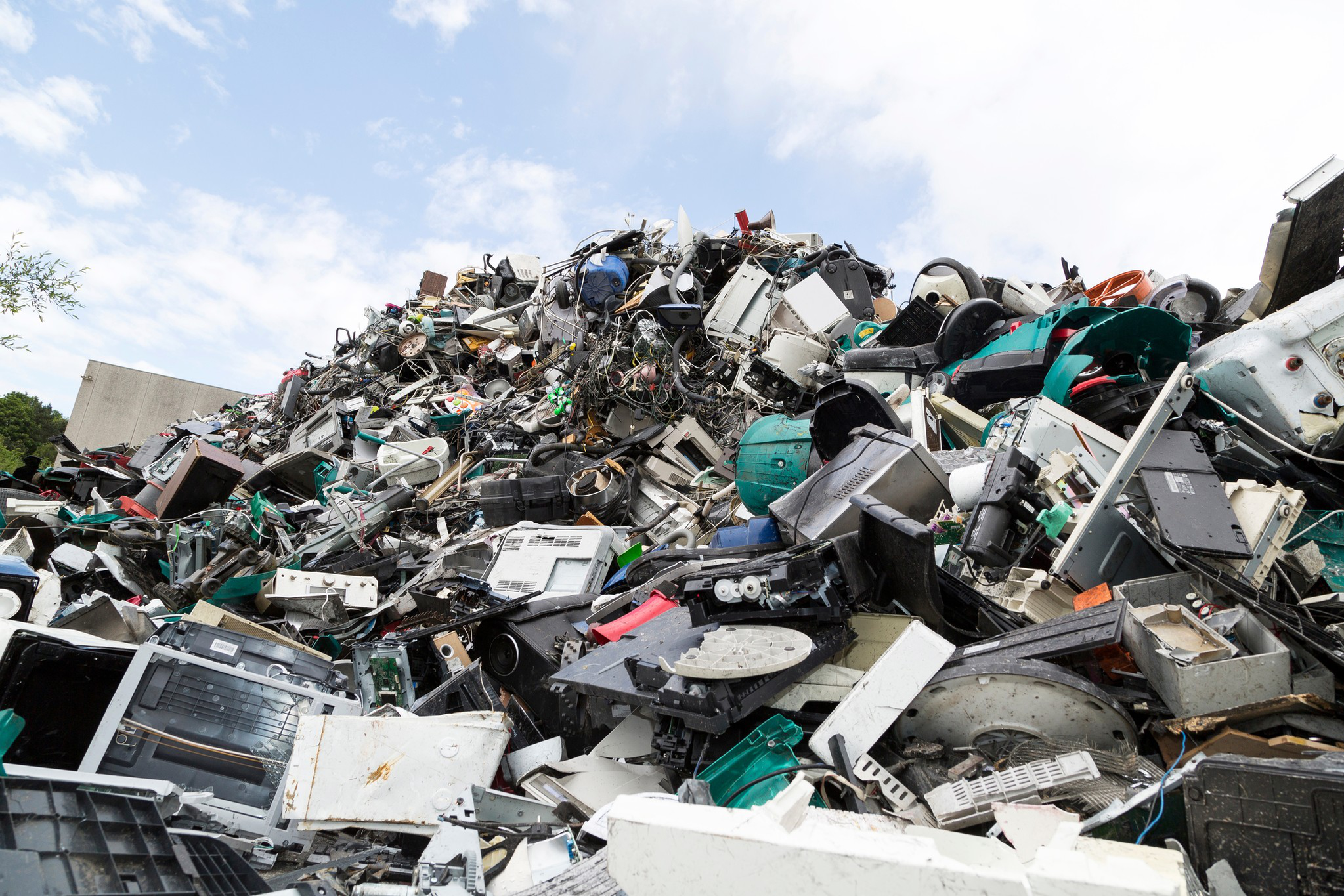1.7 million tons of electronic waste are generated annually in Germany. However, only a small portion of it is disposed of properly, and it often ends up in household waste. Valuable metals and other raw materials that could be recycled are thus lost, and much recycling potential remains untapped. For a successful circular economy, it is important to improve the currently very incomplete collection of electronic waste and to reintegrate these "resource mines" into the recycling loop. A task that can only be solved with the involvement of everyone – from manufacturers to consumers to disposers.

What is meant by electronic waste?
Electronic waste, or e-waste, refers to all products equipped with electrical or electronic components. This includes battery-operated children's toys, discarded televisions, old smartphones, kitchen appliances that have outlived their usefulness, or bathroom scales. However, products where it is less expected also fall under the Electrical and Electronic Equipment Act (ElektroG) as soon as they have permanently installed electrical components. These include, for example, shoes with flashing soles, electrically adjustable slatted frames, or cabinets with built-in lighting. As soon as the electrical or electronic component of these items cannot be removed or replaced, or only with great difficulty, the entire product must be disposed of as electronic waste at the end of its life. If the electrical components can be removed, only these belong in the electronic waste collection. So-called passive devices, which have no function themselves but only serve as conductors, such as antennas, cables, adapters, sockets, or plugs, also belong to electronic waste.
Why is electronic waste important for the circular economy?
Every year, more electronic devices come into circulation. And year after year, there is more electronic waste. Across Europe, e-waste is even the waste stream that is increasing the most. Much of it is still not properly disposed of and recycled. However, old devices contain many valuable raw materials, especially metals such as copper, cobalt, silver, gold, or lithium, whose extraction not only costs a lot of energy and labor but sometimes even harms the environment. For this reason, it is important to return these precious raw materials to the production cycle. The EU has even set clear rules for this since 2019: 65 percent of all electronic devices put into circulation should be collected and recycled. However, Germany is still far from this: According to a calculation by the Federal Environment Agency, the collection rate in 2020 was only 44.1 percent. In the EU, the recycling rate for electronic waste is even lower, at under 40 percent. This means that a large portion of the valuable materials is lost.
The recycling of electronic waste
Old electrical appliances contain a variety of valuable raw materials that can be recycled, such as metals, plastics, glass, or even rare earths. The current Electrical and Electronic Equipment Act (ElektroG) regulates the environmentally friendly disposal or recycling of old devices with the aim of improving the recycling of valuable raw materials in electronic waste.
Accordingly, consumers must return their old electrical devices to electronics stores with a sales area of 400 sqm or more, to recycling centers, or to large supermarkets that sell electrical appliances. From there, further processing begins in the form of repair or disassembly. Unfortunately, many old devices do not make it to the disposal route. They lie for years in drawers, cupboards, or garages, or even end up in household waste.
This results in large quantities of valuable raw materials being lost, and pollutants being released into the environment. According to the Federal Environment Agency, an average of 22 kg of electronic waste per person was generated annually in 2019, but only 45 percent is properly disposed of or returned. Old mobile phones, in particular, are found in abundance in German drawers – according to a survey by the Federal Association for Information Technology, Telecommunications and New Media e.V. (Bitkom), there were almost 200 million pieces in 2020.
This means that approximately 50 tons of silver, 4.8 tons of gold, and 1.8 tons of palladium are stored in German households. All these raw materials could be returned to the cycle through recycling. The valuable lithium-ion batteries found in mobile phones alone are up to 75 percent recyclable. Lithium is a very valuable raw material required for the construction of electric cars, and its extraction is very complex.
How does electronic waste recycling work?
Recycling involves mechanical, thermal, and chemical processes and essentially consists of the following steps: First, the electronic waste is pre-shredded mechanically. Subsequently, pollutants such as batteries, toner cartridges, or capacitors, as well as wood and textile residues, are manually sorted out. Then, everything is shredded again in three successive units. Using a magnet, the iron is extracted. This is separately transported to the steelworks, where it can be melted down and recycled as a raw material. The remaining metal-plastic mixture is processed in several steps, and the metal is separated from the plastic. It is sorted by type and size using screening techniques and metal separators. In an optical process and through air pressure, aluminum is filtered out. The remaining mixture is split with further shredding units to separate metals from plastic parts. To ensure that even the smallest valuable materials are not lost, the plastic-metal mixture is washed on a wash table in two processes. Here, lighter plastic is separated from metals.
Throughout the recycling process, a lot of dust is released, which also contains tiny metal particles. To reintroduce these into the value chain, autogenous pellets are made from the dust for the metallurgical melting process.

The challenges of e-waste recycling
Since most electronic devices consist of a variety of different materials, some of which are inseparably connected, recycling is often a technically and economically challenging task. So far, the recycling of electronic waste is therefore mostly limited to bulk metals such as steel, iron, aluminum, copper, and precious metals, which are easily recyclable. Rare earths, gallium, tantalum, and indium have global recycling rates of less than one percent. They are complex and used in very small quantities in electronic devices, making them difficult to recycle.
Which substances contained in electronic waste are actually recycled depends on the available technologies and profitability. To be able to recycle electronic waste holistically, several, sometimes complex, sub-processes are needed, which use different technologies to address the individual components of the raw material. Only with sophisticated process technology is it possible to efficiently and economically recycle the very heterogeneous electronic waste while separating all pollutants. For example, modern sorting systems make an important contribution by separating the very heterogeneous electronic waste into its individual components, such as metals, technical plastics, circuit boards, cables, and wires, among others.
Conclusion
Waste electrical and electronic equipment is full of valuable materials that should be utilized. It doesn't matter whether it's a hairdryer, a toaster, or an old smartphone. Considering that e-waste is the fastest-growing waste stream across the EU, the recycling potential must be significantly more exploited in the future. Otherwise, it will not be possible to close the loop. Besides the fact that waste electrical equipment contains a lot of valuable raw materials that should be made available again, many substances that are dangerous to humans and the environment are released when e-waste is incinerated or landfilled.
For this reason, it should become standard for all consumers to dispose of their waste electrical equipment through the proper channels. Manufacturers of electrical devices should, in the future, pay more attention to a modular design, easy repairability, the avoidance of adhesives, and the use of recycled materials according to the principle "Design for Recycling". And last but not least, politics is also called upon. It should create the conditions to monitor waste disposal more closely. Incentives must be created for recycling companies to invest in sophisticated process technology such as sorting systems and thus be able to efficiently recycle heterogeneous e-waste.

